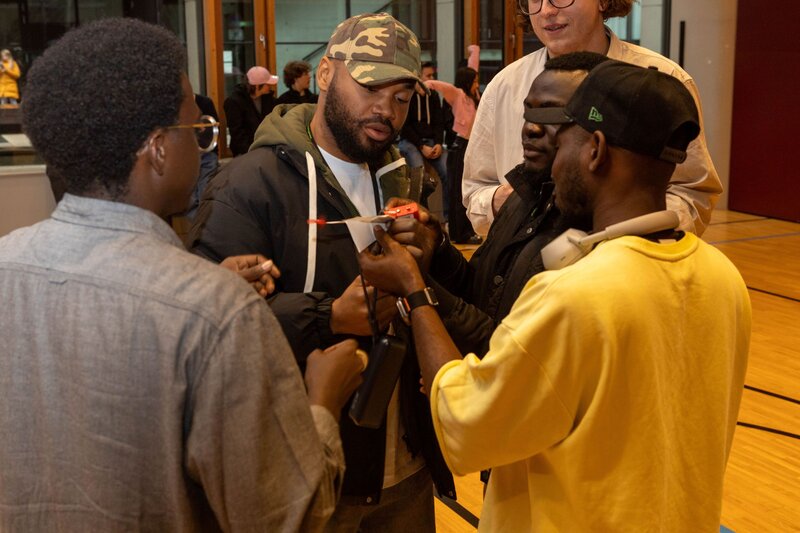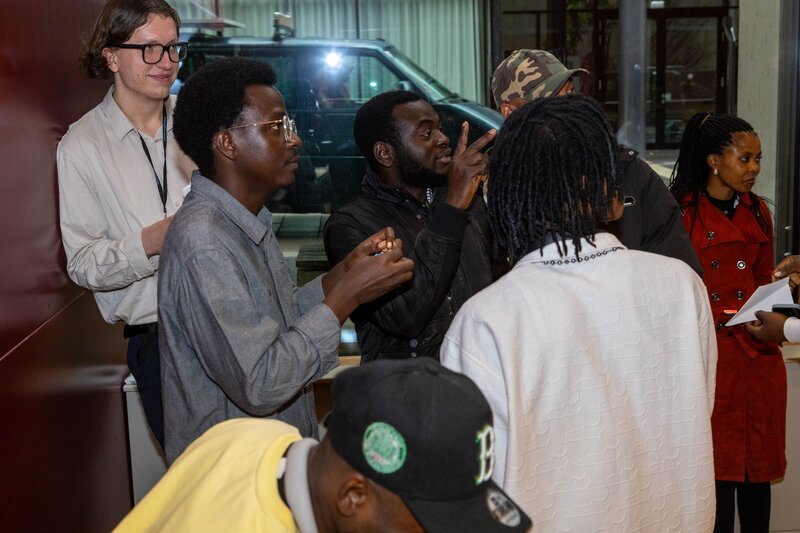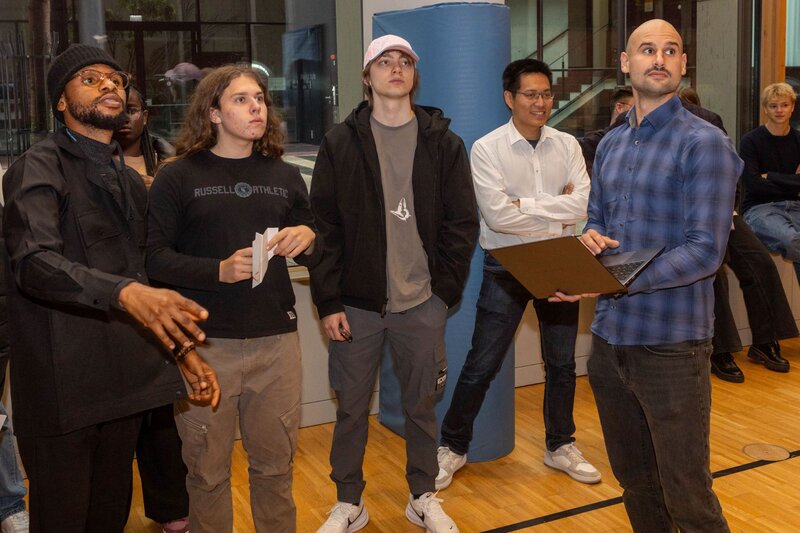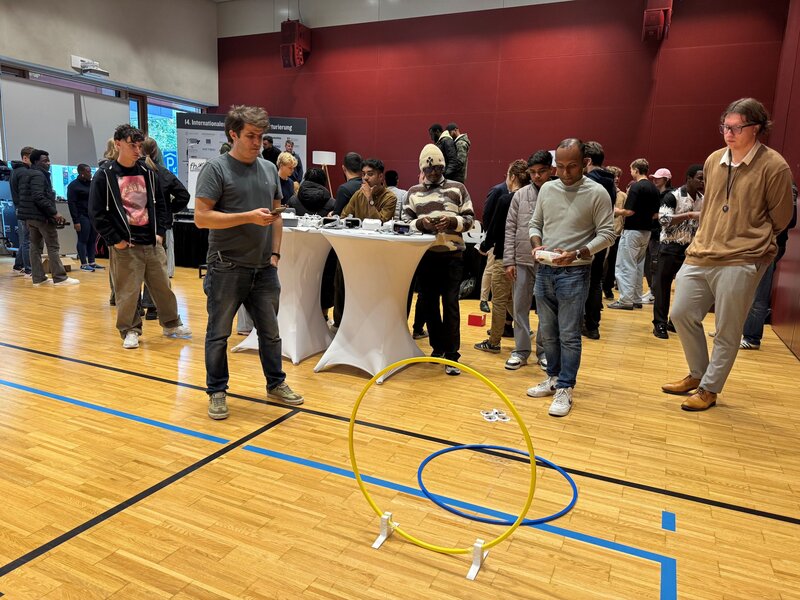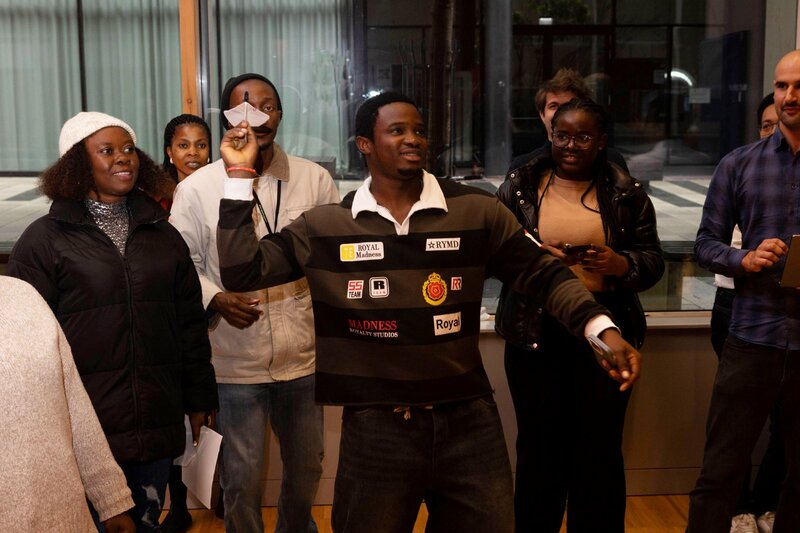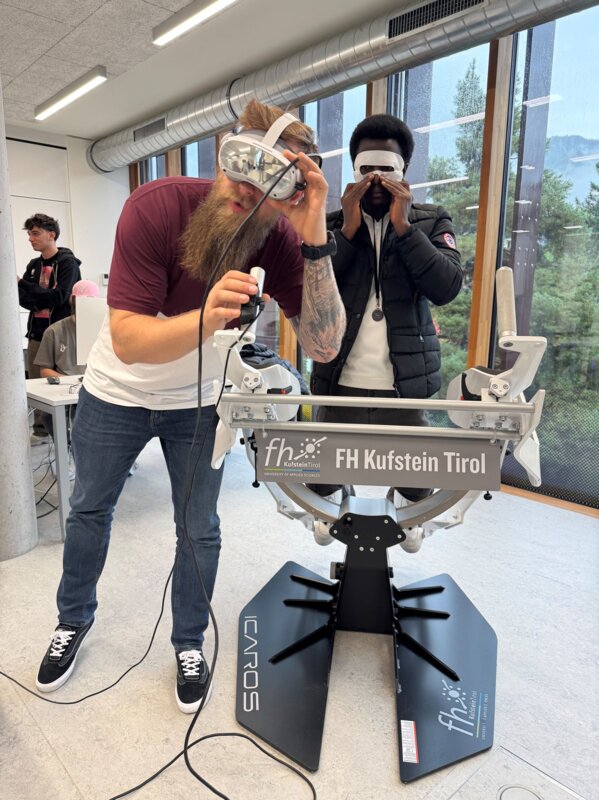That's why paper planes with motors fly at the Kufstein Uni
- 11.11.2025
- News Study Program
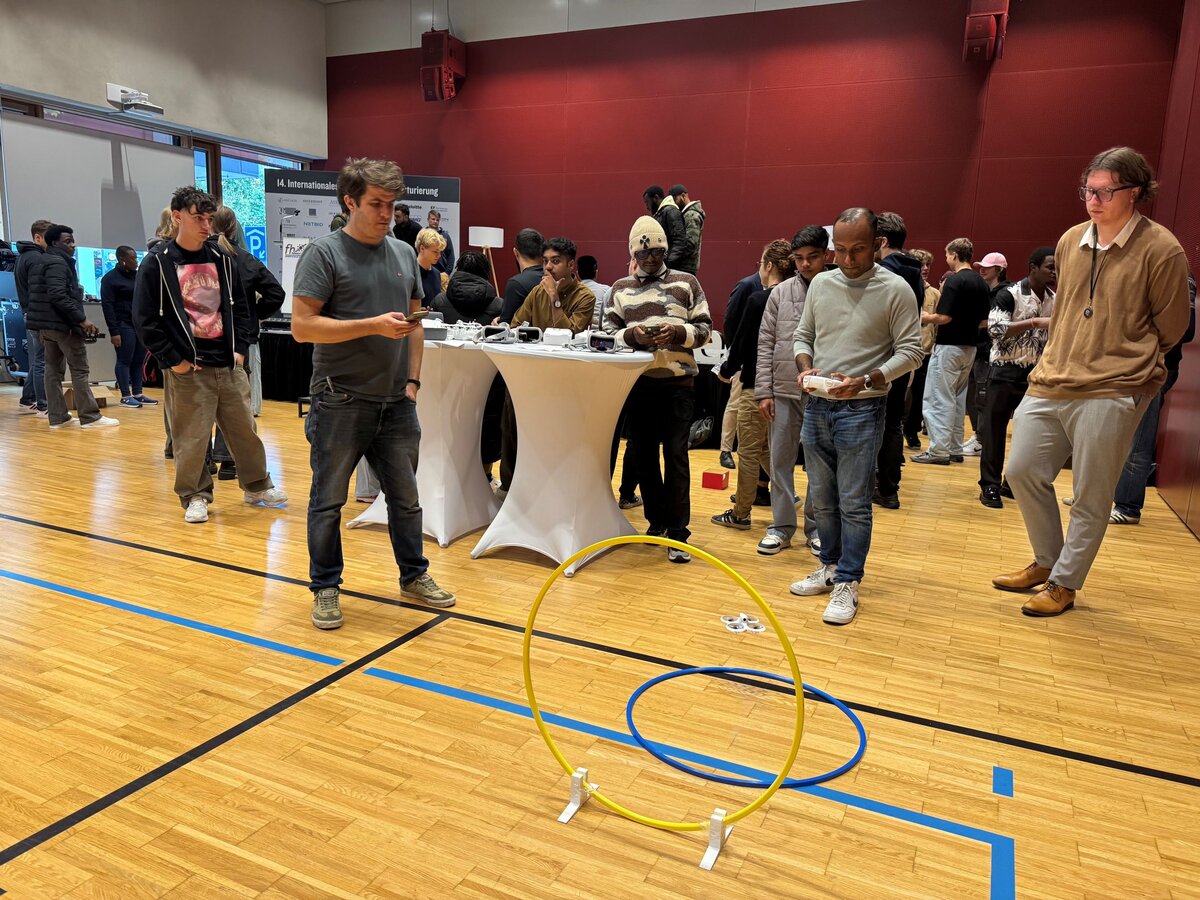
Skill was required for the quadcopter course.
The new Drone Engineering program at FH Kufstein Tirol began with a dynamic introduction event. From motor-powered paper planes to drone flight challenges, students explored aerodynamics in action while building teamwork from day one.
After an energetic start with the international kick-off workshop earlier this semester, the students of the new English-taught Drone Engineering bachelor’s program at FH Kufstein Tirol continued their introduction with a creative two-day flight experiment series in the university’s Drone Lab.
From paper planes to powered prototypes
On the first day, students were challenged to design and build motor-assisted paper planes that could stay airborne as long as possible. “The idea was to create a quick, low-cost flying object that connects directly to the essence of the program,” explains Julian Bialas, MSc, Research Associate and part oft he Drone-Engineering-Degree-Program. “Teamwork and fun were at the forefront, even though clear differences in performance and build quality soon became visible.”

With creativity and team spirit, the first paper planes from the new Drone Engineering degree program take off.
Prof. (FH) Dr. Martin Adam, head of the Drone Engineering program, shared this impression: “The atmosphere was fantastic – everyone participated enthusiastically. From the intercultural workshop to the indoor drone flights, the activities were diverse, engaging, and full of energy.”
“The flight experiments were designed to bridge theory and practice right from the beginning,” says Dr. habil. Ngoc Thinh Nguyen, Lecturer in Drone Programming, who joined FH Kufstein Tirol in September 2025. “Starting with paper planes allowed students to grasp basic aerodynamic principles – lift, thrust, drag, and control – before moving on to real drones. When they see their creations fly, it sparks curiosity and reinforces their motivation to study this field.”
The playful approach also helped the new cohort get to know one another. “University life is not only about mastering academic content,” says Bialas. “It’s also about growing personally, strengthening social skills, and realizing how powerful collaboration can be. Introductory activities like these help students develop a sense of belonging – which makes the challenges ahead much easier to tackle.”
Into the air: navigating the first drone challenges
On the second day, the Drone Lab turned into a mini airfield. Under the guidance of Nguyen, students tested their skills by steering quadcopters through a course of obstacles and landing targets. Wearing FPV (First-Person View) goggles and using remote controllers, they experienced the thrill of piloting a drone as if from the cockpit.
The exercises ranged from FPV racing and precision landings to a lighthearted Candy Collection challenge, in which teams had to pick up and drop sweets into a box using drones. “These activities combined technical learning with teamwork,” Dr. Nguyen explains. “They also highlighted soft skills like coordination, communication, and trust - qualities that are just as important in engineering as the technical aspects.”
The flight experiments were designed to bridge theory and practice right from the beginning.
Dr. habil. Ngoc Thinh Nguyen
University lecturer in drone programming
His personal highlight? “The moment when the first team managed to deliver the candy successfully,” he recalls. “At first, everyone hesitated. But when the candy dropped into the box and the crowd erupted in joy, it completely changed the atmosphere. Suddenly, everyone wanted to try – that was a true moment of shared excitement.”
The students’ reactions reflected that same enthusiasm: “Nice Start,” “It was an amazing experience,” “Really enjoyed the day,” “I didn’t expect it to be that active,” and “Starting off the first day with amazing challenges has immense joy and happiness.” “That’s exactly what we want to achieve,” says Adam. “Learning should be fun – and despite our students’ diverse cultural backgrounds, we aim to create one shared path of learning.” And he adds: “Next, we’ll move into lectures that combine theory and practice.”
Links:
- Drone Engineering | ft
- Drone Lab | Website
